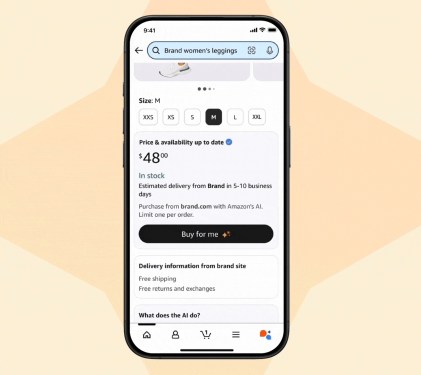AI Shopping Revolution: Amazon’s New Agent Set to Transform Online Retail

Amazon is making strides in the e-commerce sector with its latest innovation, the “Buy for Me” feature, an AI shopping assistant that caters to users by sourcing products from third-party websites. Announced in a recent blog post, this initiative is currently being tested with select users.
When the Amazon platform cannot fulfill a user’s search, Buy for Me will step in to showcase related products available elsewhere online. This seamless integration enables users to complete purchases without exiting the Amazon Shopping app, enhancing convenience and accessibility in online shopping.
Amazon is not alone in this endeavor; it joins the ranks of tech giants such as OpenAI and Google, all vying to develop AI-driven shopping agents capable of navigating various online marketplaces autonomously. While Amazon remains a dominant force in the e-commerce landscape, this new feature could significantly broaden its market reach, tapping into an even larger share of the online shopping ecosystem.
Under the hood, Amazon’s AI shopping assistant leverages cutting-edge technology, employing its proprietary Nova AI models in conjunction with Anthropic’s Claude. One of the standout models is Nova Act, recently unveiled, which showcases the capability to autonomously browse websites and make selections based on user requests.
Crucially, Amazon emphasizes security in this process. The Buy for Me feature is designed with encryption protocols that allow users’ billing information to be safely input into third-party sites, safeguarding their order details from Amazon itself. This contrasts with competitors’ approaches—like those from OpenAI and Google—which often still require users to enter their credit card details manually. The concern over handing sensitive banking information to an AI, with potential for errors, remains a significant consideration for many consumers and highlights an uneasy balance between convenience and security.
Experts point out that while the promise of AI shopping agents can streamline the online purchasing process, there are potential pitfalls. In testing, certain AI models have shown delays in processing requests and have stumbled on order completions. Amazon’s offering asks users to place a considerable amount of trust in its system—to ensure it doesn’t mistakenly order, say, a thousand pairs of socks instead of just ten. Furthermore, for those needing to return or exchange an item, the Buy for Me feature directs them back to the original retailer, potentially complicating the shopping experience further.
As Amazon’s trials continue, the industry watches closely to see how users respond. Will consumers embrace this new wave of AI-driven shopping, or will concerns about reliability and control dampen its appeal? The impending results will provide insight into our readiness for an AI-driven shopping future.
For further insights into the evolving landscape of AI and its applications, check out relevant articles on AI advancements here and the implications of AI in consumer finance here.
